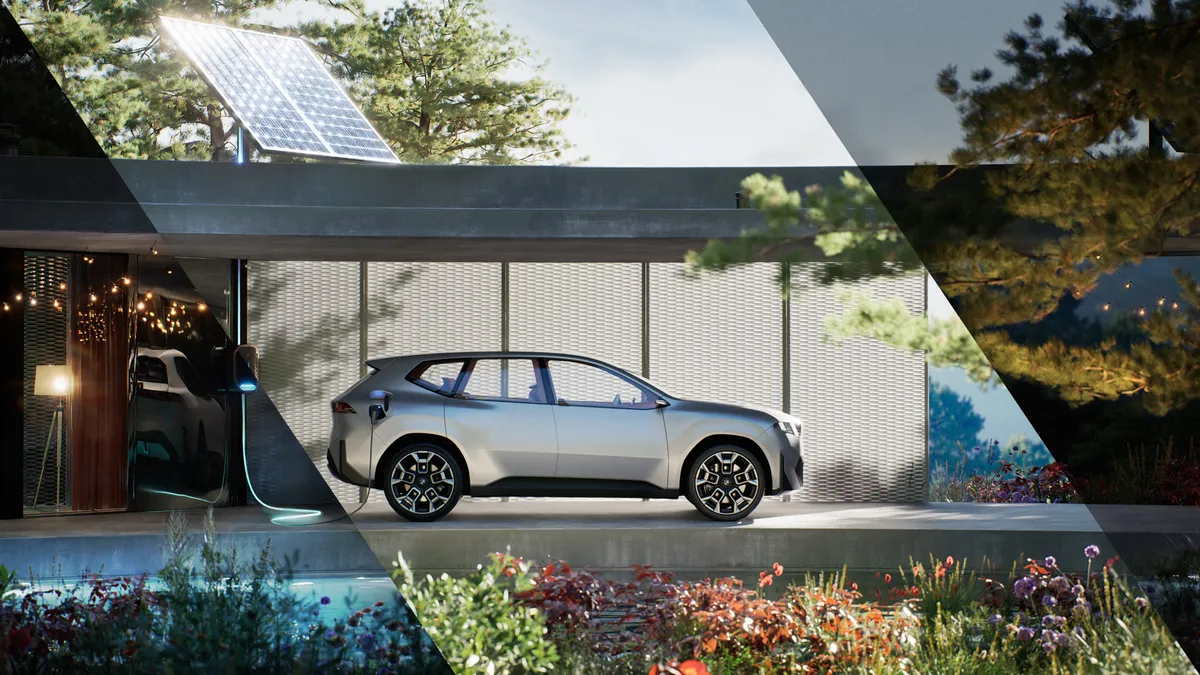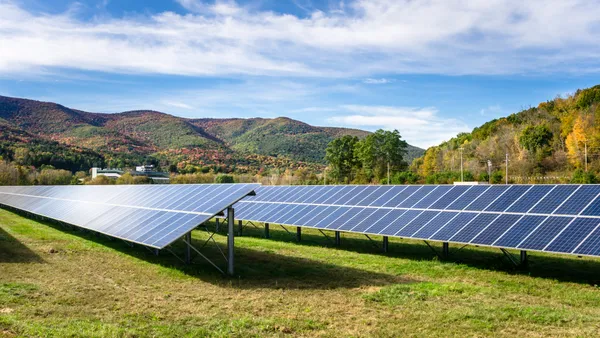Dive Brief:
- The BMW Group’s next-generation “Neue Klasse” electric vehicles, which are scheduled to enter production in 2025, will be able to store electricity to send back to the grid, or serve as a power source to supply energy to homes, the automaker announced in a press release this spring.
- Both the vehicle-to-home and vehicle-to-grid charging functions will be accessible via the automaker’s My BMW App. Access to the energy management features will be coordinated by BMW’s industry partner E.ON, a Germany-based public utility company.
- BMW joins General Motors Co., Ford Motor Co. and Volkswagen Group in the development of vehicle-to-home charging technology to help homeowners reduce energy costs and reduce CO2 emissions from power generation.
Dive Insight:
A typical EV battery pack can store around 40 kilowatt hours of energy, according to E.ON, and up to 100 kWh hours, depending on the model. So BMW and other automakers are working to harness these significant energy reserves to provide supplemental energy during times of peak demand.
The first stage of BMW’s rollout will include bidirectional charging, allowing an EV battery to serve as a stationary energy storage device. The system integrates with BMW’s Wallbox Professional Level-2 home charger and solar panels. The electricity generated by a home’s solar panels can be temporarily stored in a BMW vehicle’s battery pack, then fed back to a home’s electrical system as needed.
For the second stage of the rollout, customers will be able to select a portion of their BMW’s EV’s battery’s capacity to use for both charging from the grid and discharging electricity back to the grid during peak times. BMW says these functions will be available in select markets once the regulatory framework and other measures are adopted. E.ON will manage the charging process together with the BMW to enable revenue generation from the transfer of energy to and from a BMW EV and the grid.
The bidirectional technology also includes vehicle to load functionality, allowing an EV to power external devices like power tools, e-bikes and camping accessories.
“We are constantly improving our range of charging products and services in order to maximize the benefit to the customer,” Frank Weber, member of the Board of Management of BMW, responsible for development, said in the release.
According to the Department of Energy’s Office of Energy Efficiency & Renewable Energy, the integration of EVs with the grid will be essential for reducing emissions, as well as for maintaining reliable electricity, reducing costs and enabling a seamless charging experience.
Last month, General Motors announced the availability of its first vehicle-to-home EV charging products. The automaker’s Ultium Home V2H Enablement Kit includes a power inverter, home hub and dark start battery for delivering 9.6 kilowatts of discharge power from a GM vehicle.
BMW’s next-generation Neue Klasse EVs will be built on an all-new architecture and the first models are slated to enter series production at the automaker’s Plant Debrecen in Hungary. The EVs will also represent a major leap forward in both exterior and interior design, according to BMW.













